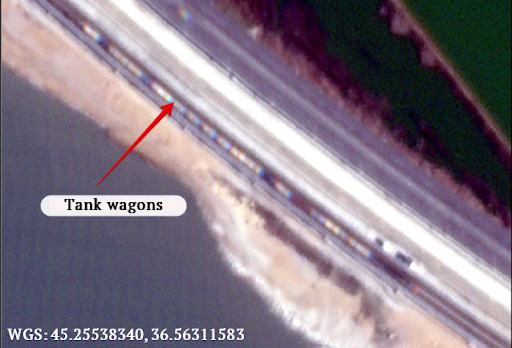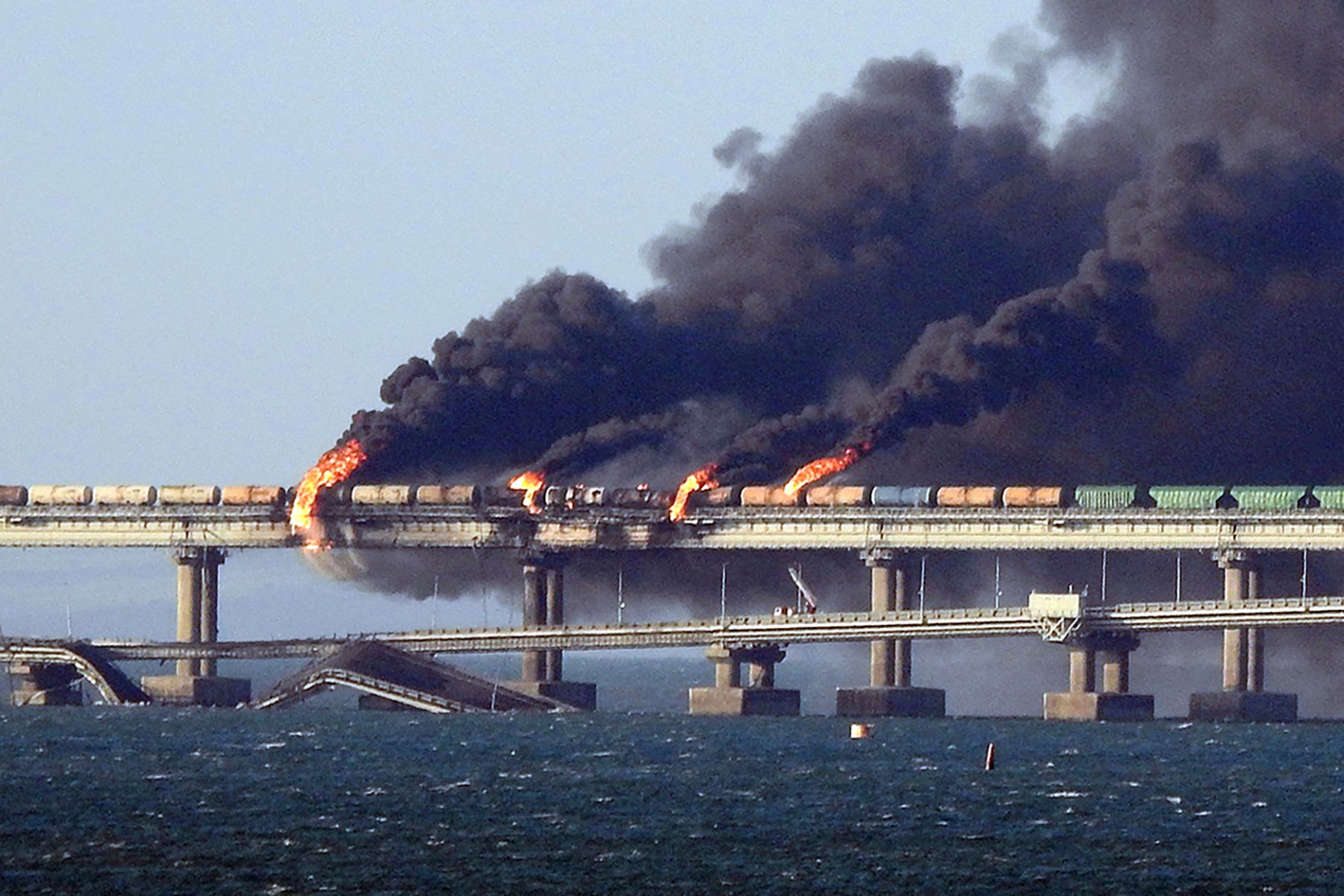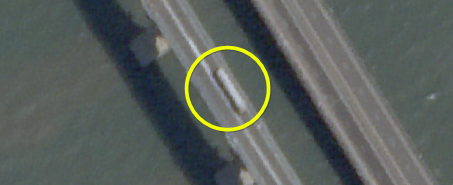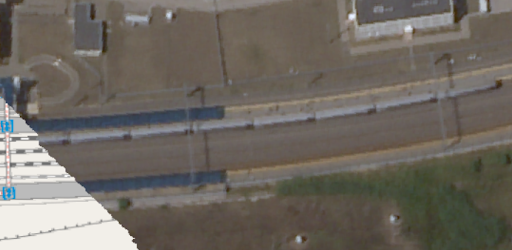Satellite images show Russia no longer using Crimean bridge to supply troops in Ukraine
Exclusive: After repeated Ukranian attacks on Kerch Bridge, Putin’s forces are relying on land routes through annexed eastern Ukraine to supply front lines
Moscow has switched to using overland routes in annexed eastern Ukraine to supply its front lines after repeated attacks by Ukraine on the Kerch Bridge, which links mainland Russia to Crimea.
Analysis of satellite images shows that the bridge, which Russia built after annexing Crimea in 2014, has almost no traffic and may therefore no longer represent an effective military target for Ukraine’s ammunition-strapped troops, according to analysts at Molfar, Ukraine’s biggest private intelligence agency.
Images taken by satellite specialists Maxar – which have been analysed by Molfar and shared with The Independent – show that almost no military freight trains have plied the bridge’s rail line in over three months.
In that period just a single Russian freight train carrying around 55 fuel cars was seen crossing the bridge on 29 February.
There was no movement involving Russian military assets on the bridge in March or April, according to Molfar. The agency, based in Dnipro, used a combination of Maxar’s images, railcar counts and cargo identification for its analysis.

Russia’s use of the bridge has gone down significantly since Ukraine attacked it with drones on 17 July 2023 and blew up a section of the roadway and the rail line, the analysis noted.
After the attack, which killed a couple and injured their daughter, Ukranian president Volodymyr Zelensky called the Kerch Bridge a “legitimate military target”, claiming that, by connecting Russia to Crimea, it was “bringing war, not peace” and had to be neutralised.
“This is the route used to feed the war with ammunition and this is being done on a daily basis,” he said. “And it militarises the Crimean peninsula.”
Ukraine had earlier attacked the bridge, which spans 19km (12 miles), by detonating an explosives-laden truck on it. That attack in October 2022 killed four people. In August last year, Kyiv fired three missiles aimed at bringing down the bridge but they were intercepted by Russia.

The closure of the bridge at the beginning of this year mirrors the aftermath of last year’s attack, with satellite images showing there was no major train movement on it in July or August. Prior to the 17 July attack, Russia was operating more than 40 trains carrying weapons across the bridge every day, according to Vasyl Maliuk, head of Ukraine’s security service.

Traffic is now down to just four passenger trains and a single general goods freight train a day, said Mr Maliuk.
The decision to stop using the Kerch Bridge to resupply Russian forces has corresponded with a surge in freight traffic via Taman in the Rostov region, Molfar CEO Artem Starosiek told The Independent.
Kyiv should now focus its attentions on Melitopol, Berdyansk and Mariupol, where Russia is laying new rail lines to connect these occupied Ukrainian regions with Crimea and mainland Russia, Mr Starosiek said.
The new rail line, which runs from Melitopol city’s Akimivka and extends to Berdyansk and Mariupol before reaching Rostov in Russia, will probably be used by Russian forces for a new offensive widely expected to begin this summer.

The line, which includes 63km (39 miles) of new track and around 140km (87 miles) of track that has been restored, was tested with its first freight train in March, Molfar said. It is expected be completed by the end of the year, with the full network connecting more areas of the annexed Donetsk region.
Mr Starosiek suggested Ukraine could benefit by targeting these overland routes rather than wasting its resources on the Crimean bridge. “It is these paths that are currently a more serious threat than the non-working railway path of the Crimean bridge,” he said.
“Western aid should also be supplied in the manner where it can cover Ukraine’s need to target these active Russian ammunition hotspots,” he added.
Join our commenting forum
Join thought-provoking conversations, follow other Independent readers and see their replies
Comments
Bookmark popover
Removed from bookmarks